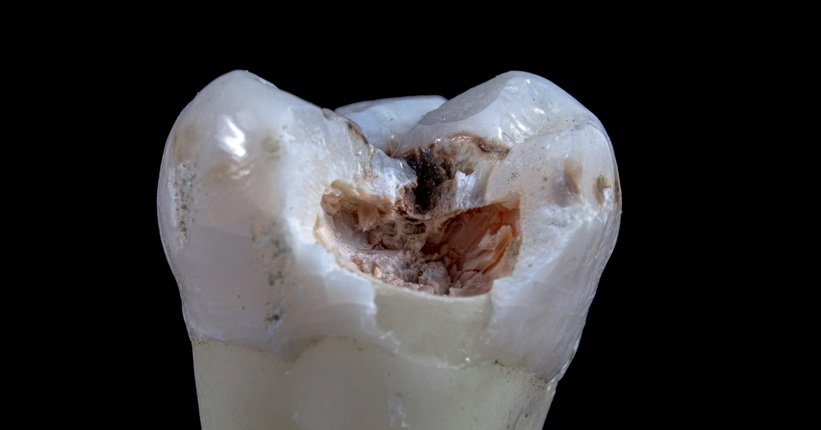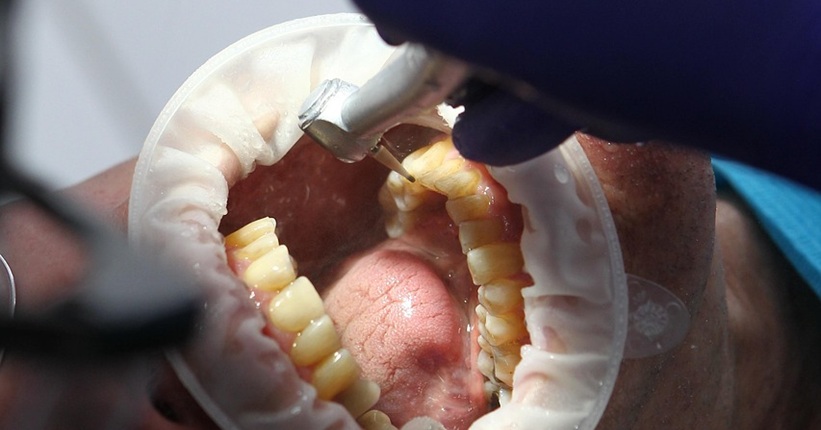
Types of dental implants
Dental implants are one of the most important developments in the field of dentistry. They allow many people to regain the full functionality and aesthetics of a smile. Implant technology is constantly evolving, offering patients a range of options tailored to their individual needs. From traditional titanium implants, to modern zirconium solutions, to innovative methods of rapid tooth restoration on implants, choosing the right type of implant can have a significant impact on the success of treatment and patient comfort. In this post, we will look at the different types of dental implants, their characteristics and benefits to help patients understand the options available and make an informed decision about treatment.
Division of implants by materials
Dental implants can be made from a variety of materials, each with its own unique properties and potential benefits. Titanium, ceramics and polymers are three common materials used to make dental implants. Here is a brief overview of the characteristics of each of these materials:
- Titan Titanium is highly biocompatible, which means that it is well accepted by the human body and minimizes the risk of rejection. It perfectly integrates with the bone, which ensures a strong and durable anchoring of the implant. Titanium is a material with high strength and corrosion resistance, which translates into a long life of implants. It can be used in a variety of clinical cases, offering different sizes and shapes of implants.
- Ceramics (zirconia) Ceramics, especially zirconia, offer exceptional aesthetic properties, such as color and transparency similar to natural teeth, which is especially important in visible areas of the smile. Like titanium, ceramics are highly biocompatible, minimizing the risk of allergic reactions or rejection. This material is resistant to stains and does not undergo discoloration, which ensures the maintenance of a natural appearance for a long time. Ceramics do not conduct heat or cold, which can be beneficial for patients with tooth sensitivity.
- Polymers Polymers are much lighter than titanium and ceramics, which may be beneficial in certain clinical situations. Some polymers may offer greater adaptation to changing conditions in the mouth. Implants made of polymers can be cheaper to manufacture and purchase than their titanium or ceramic counterparts, potentially reducing treatment costs for patients. Although polymers are increasingly advanced, they may not offer the same strength and durability as metallic or ceramic materials, which may affect their long-term lifespan.
Division of implants by shape
Dental implants differ not only in the material from which they are made, but also in shape and size. This diversity allows implant treatment to be tailored to the individual needs of the patient, both in terms of oral anatomy and specific clinical requirements. Here is a brief description of the different shapes of dental implants:
- Screw type — they are in the form of a screw, which makes them easy to screw and firmly anchor in the bone. These are the most commonly used implants that integrate perfectly with the bone, ensuring high stability and durability.
- Cylindrical — have a smooth, cylindrical surface, different from the serrated profile of screw implants. They can be used in cases where there is a need to minimize traumatization of bone tissue during implantation.
- Short — these are implants of reduced length, designed specifically for patients with limited bone height. Ideal for people who cannot or do not want to undergo bone augmentation procedures.
- Zygomatic — long implants that are anchored in the zygomatic bone. Designed for patients with severe bone loss in the upper jaw who need an alternative to traditional implants.
- Narrow — are characterized by a smaller diameter than standard implants (approx. 3 mm), which allows them to be inserted in a narrow alveolar socket. They are used in places with limited space or for patients with a narrow alveolar bone.
Choosing the right shape and size of the implant is key to ensuring its functionality, aesthetics and long-term therapeutic success. The dentist or maxillofacial surgeon assesses which type of implant will be most suitable for a given patient, taking into account their individual anatomical conditions and needs.
Division of implants due to tissue coverage
Dental implants can also be classified according to their design and interaction with oral tissues, especially considering the way in which they are covered with gum tissue after implantation. In this context, we mainly distinguish between one-piece and two-piece implants, which differ in structure, installation method and interaction with gum tissue.
- One-piece implants — consist of a single element that combines both the part that is placed in the bone (endosteal part) and the part protruding above the gum, on which the final prosthetic restoration is fixed. This means that the entire implant is placed in one surgical session. One-piece implants are primarily a simpler surgical procedure, no need for additional treatment to expose the implant and usually a shorter waiting time for the final prosthetic reconstruction. Unfortunately, they are also characterized by less flexibility in adjusting the final position of the reconstruction, since the angle of the implant must be carefully planned from the beginning. In addition, if there are any problems with the implant, it may be necessary to replace it completely.
- Two-Piece Implants — consist of two separate parts: a part inserted into the bone and a prosthetic fastener (also called an abutment) on which a crown, bridge or other prosthetic reconstruction is placed. After the part is implanted in the bone and integrated into the bone, a prosthetic fastener is placed at the stage of the second procedure. Two-piece implants primarily mean greater flexibility in adjusting the angle and position of the prosthetic reconstruction, which is especially beneficial in the case of complex rehabilitation. It is possible to replace only the fastener without the need to remove the entire implant, if necessary. Unfortunately, the procedure requires at least two surgical steps: implantation and exposure of the implant, which is associated with a longer total treatment time. There is also a potential risk of micromovements between parts of the implant, which can lead to complications.
Classification of implants by location
Dental implants can also be classified based on their location relative to the jaw bone. This category includes intraosseous, subosseous and premucosal implants, each of which has a different way of placement in the oral cavity and serves different needs of patients.
- Intraosseous implants — these are the most commonly used implants, placed directly in the jaw bone or jaw bone. They can be of various shapes, including the most common screw or cylindrical. Designed mainly for patients with a sufficient amount of healthy maxillary bone, which allows the implant to be anchored directly. Ideal for long-term restoration of single teeth, bridges or complete dentures on implants. They are characterized by high stability and durability, as well as the ability to achieve excellent osteointegration, which translates into a long-lasting and effective prosthetic solution.
- Subosseous implants — consist of a metal frame that is placed on the jaw bone, under the gum, but on top of the bone and not inside it. Intended for patients with insufficient bone volume who are not eligible for intraosseous implantation or for whom bone augmentation procedures are not indicated. They offer an alternative for patients in whom traditional intraosseous implants cannot be used. They do not require direct anchoring in the bone, which reduces the need for invasive procedures.
- Premucosal implants — these are implants that pierce the oral mucosa, and their operative part is located outside the bone tissue, but inside the oral cavity. They are not anchored directly in the bone, but rest on its surface. Less commonly used, they may be considered in specific clinical situations where other types of implants cannot be used, e.g. due to anatomical limitations. They offer the possibility of prosthetic support in difficult anatomical conditions, however, they are less popular than intraosseous and subosseous implants.
Which type of implant to choose?
Choosing the right type of dental implant is a decision that requires both extensive expertise and an individual approach to the patient's needs and health conditions. Dental implants are considered one of the most advanced solutions in the field of reconstructive dentistry, offering permanent and aesthetic restorations of missing teeth. Due to the wide range of materials available (such as titanium, zirconia) and types of implants (intraosseous, subosseous, premucosal), patients may feel overwhelmed when trying to choose the best solution for themselves. That is why the dentist plays a key role here, who, based on his knowledge and experience, is able to advise which implant will be the most effective.
The dentist evaluates many factors, including the condition of the bones, the patient's overall health, aesthetic and functional needs, as well as specific treatment expectations. Carrying out detailed examinations, such as X-rays or CBCT scans, allows for a thorough analysis and planning of therapy. The specialist is able to assess whether the patient needs intraosseous implants, which require a sufficient amount of healthy bone, or if other options such as subosseous or zygomatic implants should be considered in specific cases.
Implants are an investment for years
The decision to invest in dental implants is a decision to invest in your own health and quality of life for many years to come. Implants not only improve the appearance of a smile and chewing function, but also have a positive effect on the general well-being of the patient. Properly selected and installed implant can serve the patient for decades, which makes this option not only aesthetic, but also economical.
In conclusion, although the variety of dental implants available can be enormous, the dentist is the best guide in the process of choosing the right solution. Professional assessment, individual approach to the patient's needs and detailed planning are the key to success in implant dentistry. Therefore, it is important to trust the experience and knowledge of a specialist who will help you choose an implant that will be effective, safe and serve for years.
Content author

Dr. Jan Kempa
Dr. Jan Kempa is a passionate dentist who always cares about a good relationship with patients. His positive attitude makes even the most timid patients feel safe. He specializes in implantology and dental surgery, using modern treatment techniques. He is enthusiastic about using his own tissues to rebuild bones before implantation and to cover gum recession. Dr. Kempa always finds the time to listen to the patient and offers individual solutions.

Start treatment already today!
Make an appointment and discover why our patients recommend us to their loved ones. We will take the utmost care of your smile.


